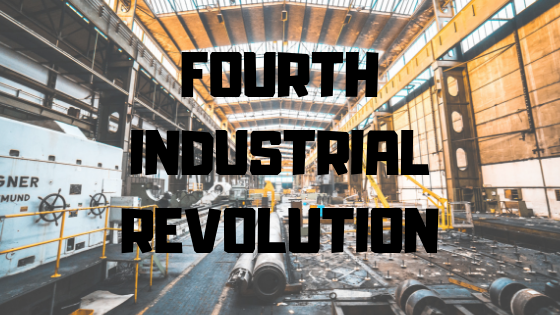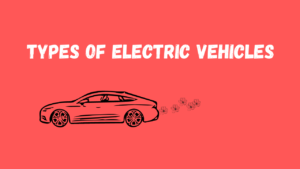In this article, you would be able to understand the fourth industrial revolution, progression from the previous revolution, components of the fourth industrial revolution.
Table of Contents
Getting things in perspective
Before we dive further let’s get things in perspective by understanding briefly about the previous three revolutions.
The first industrial revolution was based on the use of steam engines to mechanize production. The first revolution was driven by the discovery of steam engines. It facilitated all kinds of interesting things.
The First Industrial Revolution, was the transition to new manufacturing processes in Europe and the US, in the period from about 1760 to sometime between 1820 and 1840. This transition included going from hand production methods to machines, new chemical manufacturing, and iron production processes, the increasing use of steam power and water power, the development of machine tools and the rise of the mechanized factory system.
Second Industrial revolution was about the use of electric power to create products at mass production. The Second Industrial Revolution, also known as the Technological Revolution was a phase of rapid industrialization between the late 19th century and early 20th century.
Third Industrial Revolution also known as Digital Revolution is the shift from mechanical and analog electronic technology to digital electronics which began anywhere from the late 1950s to the late 1970s with the adoption and proliferation of digital computers and digital record keeping that continues to the present day.
Origin of the word Industry 4.0
The term “Industry 4.0”, shortened to I 4.0 or simply I 4, originates from a project in the high-tech strategy of the German government, which promotes the computerization of manufacturing.
The term “Industry 4.0” was revived in 2011 at the Hannover Fair. In October 2012 the Working Group on Industry 4.0 presented a set of Industry 4.0 implementation recommendations to the German federal government. The Industry 4.0 workgroup members and partners are recognized as the founding fathers and driving force behind Industry 4.0.
What exactly is Industry 4.0?
In simple words Industry 4.0 is the integration of physical, digital and biological world to make things quicker and efficiently.
It means machines will be able to interact with each other and other factors of production sphere, collect data, analyze it and support humans make better decisions.
Adoption of Industry 4.0 is expected to increase efficiency by 30% and make processes 25% faster. We can smell a lot of growth in the manufacturing sector with the implementation of Industry 4.0.
Four design principles in Industry 4.0
Interconnectivity
Interaction between machines, sensors, devices and people through the phenomenon of the internet of things(IoT). You are able to control your air conditioner through a mobile device is an example of the interaction between machine and mobile device.
Virtualization
In industry 4.0 there would be a digital copy of each physical product. It would help interaction between physical products, which indeed will help in better decision making.
Data Support System
Manufacturing processes in Industry 4.0 would be data-driven. Data helps make better decisions, with reduced errors, in less time.
Let me give you two scenarios. Based on each scenario you have to make a decision, whether you should plan a vacation at Delhi in June Month.
Scenario 1: You have no information or data about the Delhi weather in June Month.
Scenario 2: You have data, which suggest that temperature for June month varies between 39 Degrees to 47 Degrees in Delhi.
In which scenario would you be able to make a better decision, whether you should plan a vacation at Delhi in June Month.
It is definitely scenario 2. In Industry 4.0 processes would be backed by data, hence more optimized and quicker.
Real-time feedback: In smart Factories machines should be able to capture data, record it, analyze it and provide feedback.
In industry 4.0 we are switching from preventive maintenance to predictive maintenance. Real-time feedback mechanism has facilitated this shift.
Decentralization
Cyber-physical system(CPS) is the name given to a system of interaction between the physical and digital world.CPS is able to make autonomous decisions based on data collected. It also suggests ways to optimize activities based on data analytics.
This Autonomous decision making(decentralization) makes the process quicker and more efficient.
Components of Industry 4.0
Autonomous Robots
Conventional robots did repetitive tasks.No thinking or improvisation of there own. But in Industry 4.0 setup these robots will be replaced by robots which learn through iterations.
Autonomous robotics is usually considered to be a subfield of artificial intelligence, robotics, and information engineering.
Big Data Analytics
Big data analytics will help make more informed decisions.It would help plot patterns from multiple and complex data sets.
Simulation
Simulation is an imitation of a situation or process. Industry 4.0 will use simulation to mirror real-time data and assess outputs before bringing things in reality.
It will help in simulating part setting process before starting production. The simulation would improve process efficiency tremendously. It would also help improve the quality of products manufactured.
Simulation is learning from your mistake without making it.
Internet of things
The Internet of things (IoT) is the extension of Internet connectivity into physical devices and everyday objects. Through this technology, machines can interact with each other and people processing them.
It will make analysis on real-time data basis, hence reducing response time. It will help move from preventive to predictive maintenance.
Additive Manufacturing
Till date, manufacturing has been about reduction manufacturing processes. With the advent of technologies like 3D printing, additive manufacturing processes have come in the picture.
Additive manufacturing can make complex geometries, with greater precision. It can also help make products lightweight.
Additive manufacturing brings digital flexibility and efficiency to manufacturing operations.
Additive manufacturing uses data computer-aided-design (CAD) software or 3D object scanners to direct hardware to deposit material, layer upon layer, in precise geometric shapes.
Augmented Reality
Augmented-reality-based systems would help operators make better decisions. It would help them check product compliance to acceptance criteria on a real-time basis.
Cybersecurity
These technology integrations would increase the importance of cybersecurity. With more data being exposed to threats. So advancement in this segment is an important aspect of Industry 4.0 growth.
The Cloud
More production-related undertakings will require increased data sharing across sites and company boundaries. At the same time, the performance of cloud technologies will improve, achieving reaction times of just several milliseconds. This would enable a more data-driven production system.
Horizontal and Vertical Integration
With Industry 4.0, all segments of organizations become more and more connected.It would lead to horizontal and vertical integration through digital integration and network.
Departments like engineering, production, and marketing have interlinked activities. Integration of all these activities is one of the aims of Industry 4.0.




